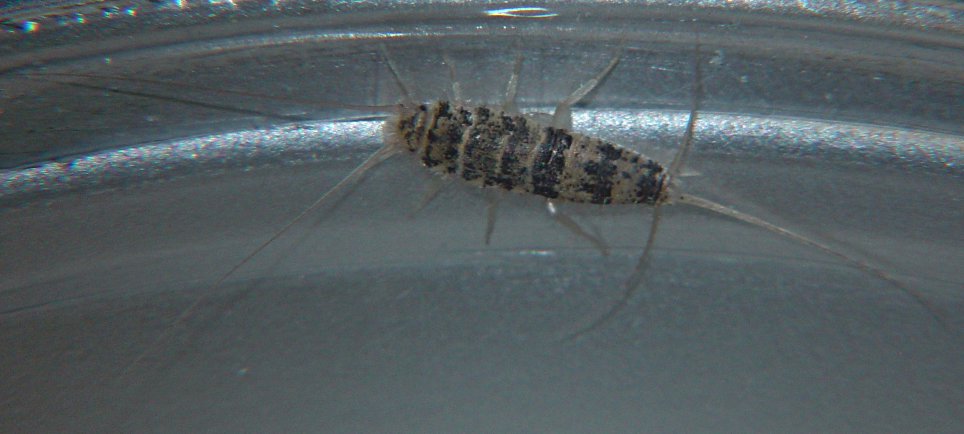
Interactions with other species
The firebrat has fungal and bacterial populations within its gut that aid it in cellulose digestion. Although these primitive insects have their own cellulase enzymes that are of insect origin, the symbiont aided cellulose digestion is a derived trait (Treves & Martin 1994). Also several parasitic Gregarine protozoans have been discovered that use T. domestica as their host (Adams & Travis 1935).
Humans aid the firebrat by providing microhabitats and nutrition that can sustain them in colder regions. This has allowed the firebrat to expand their niche into regions where they would be unable to survive. They also may have to compete for niches with other household pests, like the cockroach (Ordish 1960).
The firebrat may depend on humans to provide microhabitats in colder regions but overall they are sensitive to disturbance. The female is highly sensitive to disturbances that is evident in egg production. An experiment was done that recorded egg production with different intervals of disturbances where they produce fewer eggs with more disturbances. Also after disturbances it takes time for egg production to bounce back to higher egg counts (Adams 1933).
To read more about silverfish and firebrat interactions visit this website.
